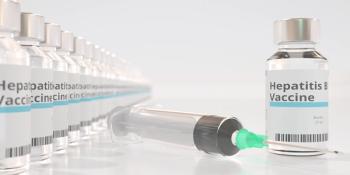
Expanded telehealth helped patients treated for opioid use disorder in COVID-19 pandemic
Practices could continue to help, but experts say there are still challenges to overcome.
Expanding telehealth services for opioid use disorder (OUD) can help keep patients in treatment longer and reduce risks of overdosing.
The findings were part of a new study that compared telehealth usage for 105,240 OUD patients before the COVID-19 pandemic and for 70,538 who began treatment during the pandemic. At that time, federal regulators supported broader use of telehealth services and relaxed policies on prescribing methadone and buprenorphine for OUD treatment, said the study published Aug. 31 in
Those changes “were associated with improved MOUD retention and lower odds of medically treated overdose, lending support for permanent adoption,” said the study, which used data from the U.S. Centers for Medicare & Medicaid Services from September 2018 to February 2021.
Expanded telehealth and medications for opioid use disorder (MOUD) could save lives, countering an overdose death rate that set a
“The expansion of telehealth services for people with substance use disorders during the pandemic has helped to address barriers to accessing medical care for addiction throughout the country that have long existed,” senior author Wilson Compton, MD, MPE, deputy director of the National Institute on Drug Abuse, said in a
The findings
The study compared the COVID-19 cohort and the pre-pandemic cohort and found the former used telehealth more for any health service (68.6% vs 2.5%), for behavorial health (41% vs. 1.9%), and for OUD treatment (19.6% vs. 0.6%). Proportionally, the COVID-19 cohort were more likely to receive MOUD (12.6% vs. 10.8%).
Both groups had similar rates of medically treated overdose, although patients receiving OUD telehealth services had lower odds of overdose when figures were adjusted for MOUD, demographic background, and clinical characteristics, the study said.
Both groups had “only a small proportion of individuals” who received MOUD on 80% or more of eligible days. “This finding underscores the ongoing challenges in engaging and retaining patients in treatment,” the study said.
The national figures also showed
New approaches
The study authors were clear more research is needed on telehealth and OUD, which affirmed expert discussion convened by the National Academy of Medicine (NAM) in December 2021. This summer, NAM published those
Daniel P. Alford, MD, MPH, explained the COVID-19 pandemic telehealth had positive effects:
- Increased access to and convenience of care.
- Reduced anxiety for patients.
- Improved understanding patients’ home environments, which can improve therapeutic relationships.
But telehealth has reduced the structure and accountability for patients, lessened information for clinical decision making, and added difficulty in establishing personal connections with patients. There are also technology-related challenges and limitations, Alford said.
The NAM panelists agreed the time is now to redesign models of care that incorporate telehealth when appropriate, not “simply replicating current practices in a virtual environment,” the discussion proceedings said.
Newsletter
Stay informed and empowered with Medical Economics enewsletter, delivering expert insights, financial strategies, practice management tips and technology trends — tailored for today’s physicians.








